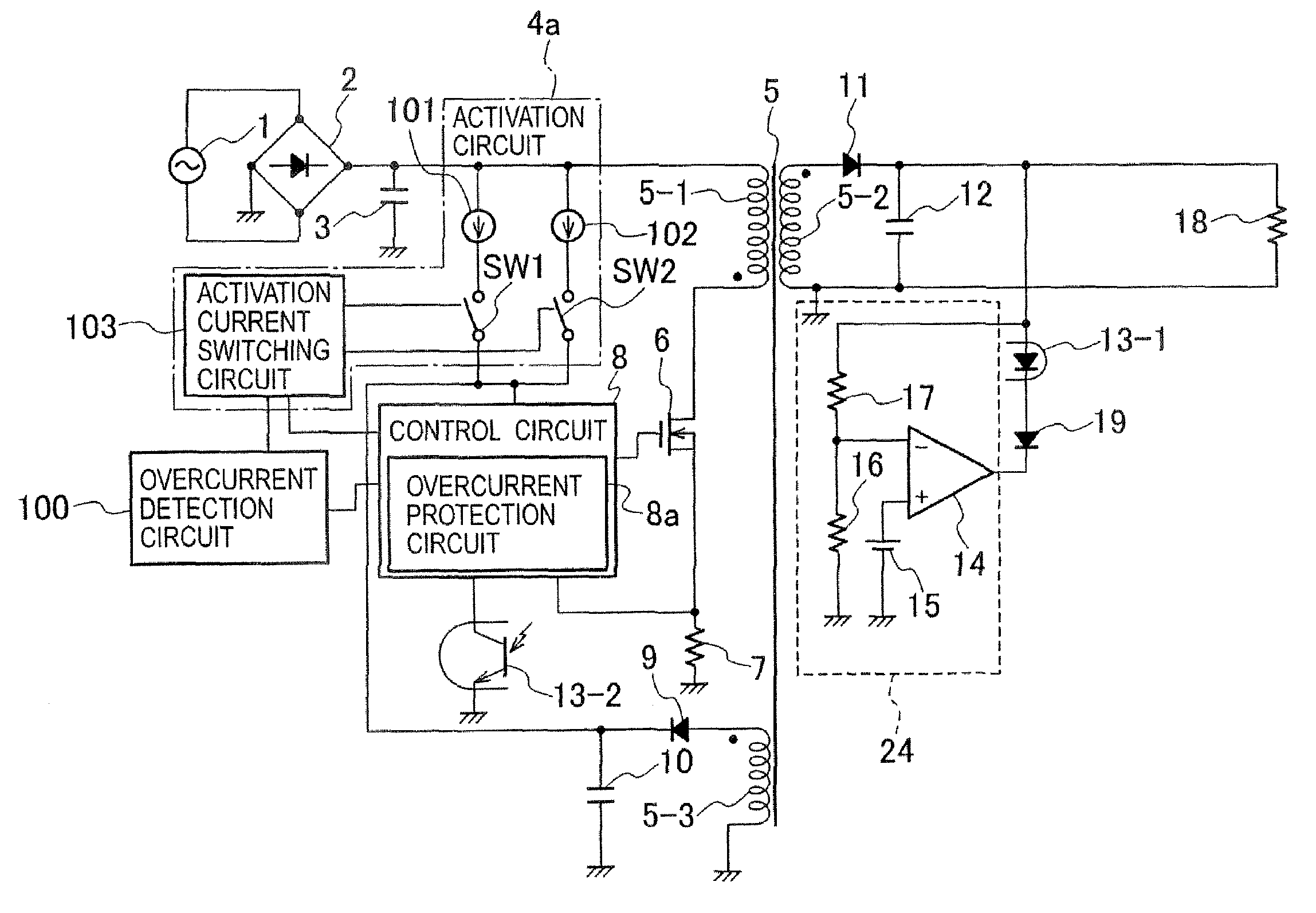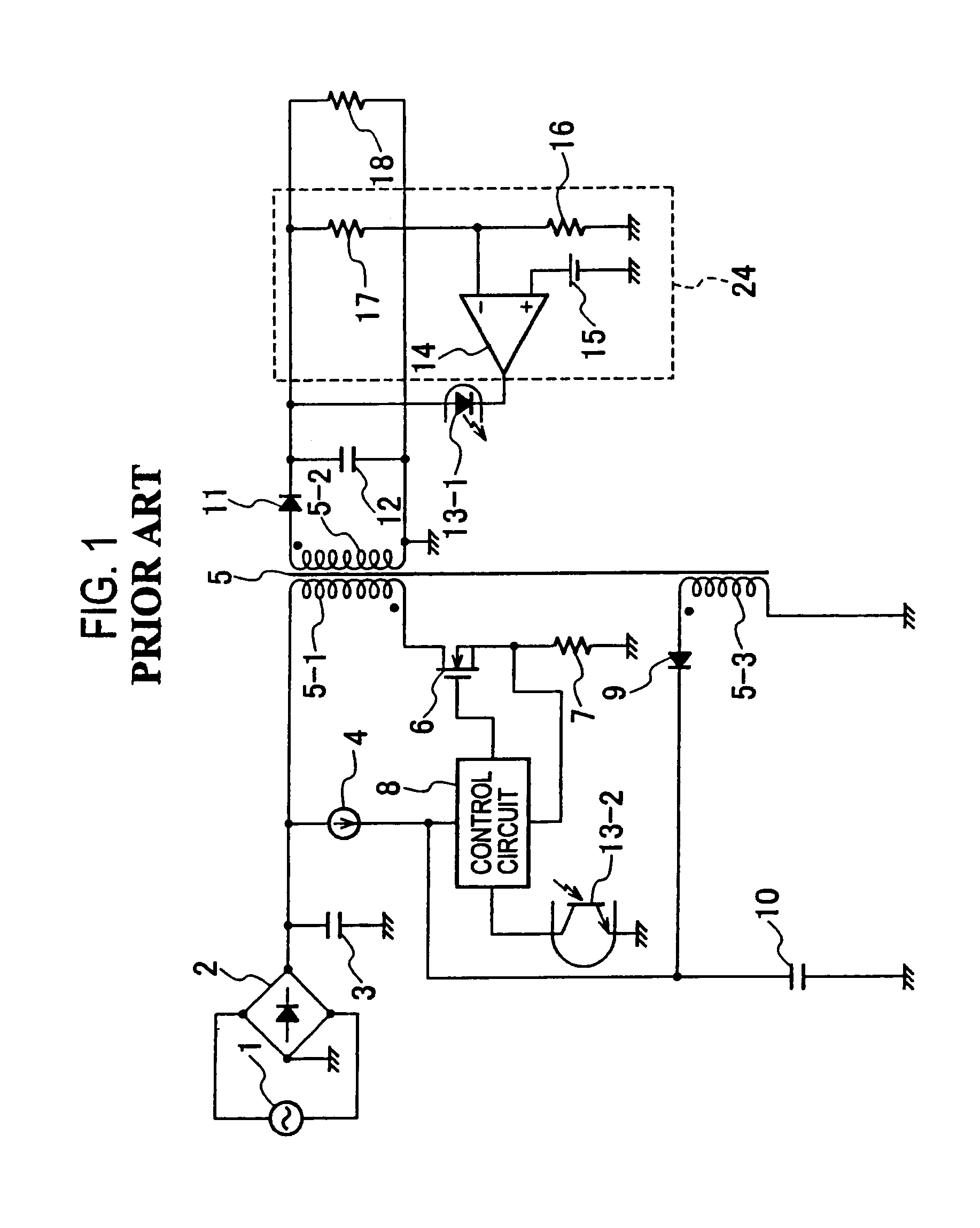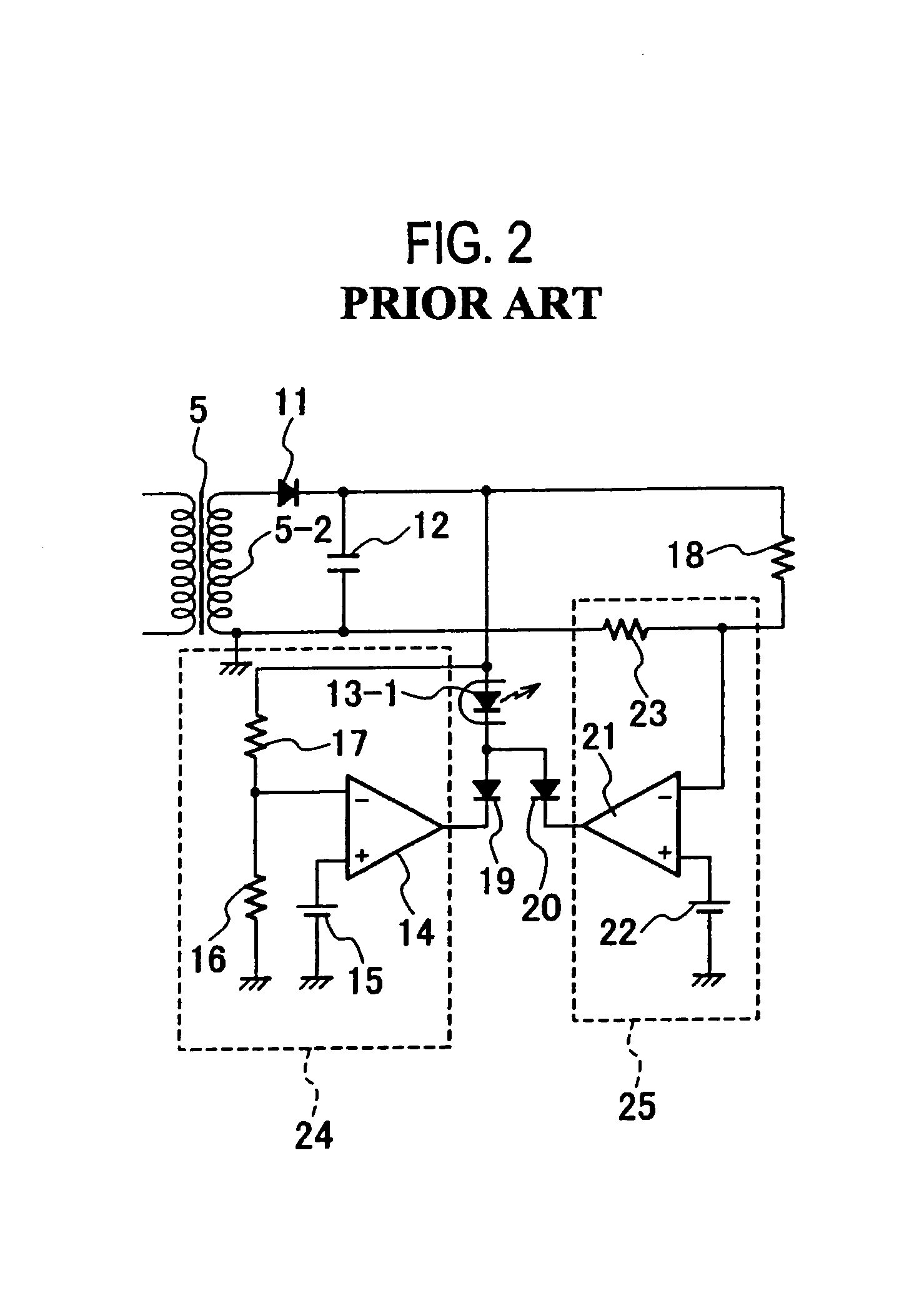DC-DC converter
a converter and diode technology, applied in the direction of dc-dc conversion, power conversion systems, instruments, etc., can solve the problems of damage to the diode b>11/b>, excessive output current flow, and small current consumption, so as to reduce power consumption when overloaded
- Summary
- Abstract
- Description
- Claims
- Application Information
AI Technical Summary
Benefits of technology
Problems solved by technology
Method used
Image
Examples
embodiment 1
[0044]FIG. 4 is a circuit configuration diagram of a DC-DC converter according to embodiment 1 of the present invention. The DC-DC converter is a flyback DC-DC converter, which is operated by inputting a DC voltage obtained by rectifying and smoothing output from an AC power supply 1 by use of a full-wave rectifier 2 and a capacitor 3.
[0045]The DC-DC converter includes: an activation circuit 4a; a transformer 5 having a primary winding 5-1, a secondary winding 5-2 and a tertiary winding 5-3; a switching element 6 formed of, for example, a MOSFET; a resistor 7 for detecting an input current; a control circuit 8 for controlling the turning on and off of the switching element 6; a first rectifying and smoothing circuit including a diode 11 and a capacitor 12; a second rectifying and smoothing circuit including a diode 9 and a capacitor 10; an output voltage detection circuit 24; a photocoupler 13 including a light emitting diode 13-1 and a phototransistor 13-2; and an overcurrent detec...
embodiment 2
[0065]As is clear from the waveform of the voltage V10 of the capacitor 10 in FIG. 5, the equivalent operations as those in embodiment 1 described above can be performed by monitoring the voltage V10 of the capacitor 10. A DC-DC converter according to embodiment 2 controls an intermittent period according to the voltage V10 of the capacitor 10.
[0066]FIG. 7 is a circuit configuration diagram of the DC-DC converter according to embodiment 2 of the present invention. The DC-DC converter is configured by changing the activation circuit 4a in the DC-DC converter of embodiment 1 to an activation circuit 4b and by adding an overcurrent detection circuit 25. In the following description, differences from embodiment 1 will be mainly described.
[0067]The activation circuit 4b includes a first constant current circuit 101, a second constant current circuit 102, a first switch SW1, a second switch SW2, resistors 110 and 111, a reference power supply 112, a hysteresis comparator 113, resistors 11...
embodiment 3
[0085]FIG. 10 is a circuit configuration diagram of a DC-DC converter according to embodiment 3 of the present invention. In the DC-DC converter, a third rectifying and smoothing circuit including a diode 220 and a capacitor 221, which are connected to the tertiary winding 5-3, is added to the DC-DC converter in embodiment 1. The overcurrent detection circuit 100 detects an overcurrent by use of a current flowing through the switching element 6. The activation current switching circuit 103 is configured to generate first and second activation currents by use of a signal from the overcurrent detection circuit 100, a voltage outputted from the second rectifying and smoothing circuit, and a voltage outputted from the third rectifying and smoothing circuit. Moreover, FIG. 10 shows specific circuit examples of the first and second constant current circuits 101 and 102, the first and second switches SW1 and SW2, the activation current switching circuit 103, and the overcurrent detection c...
PUM
 Login to View More
Login to View More Abstract
Description
Claims
Application Information
 Login to View More
Login to View More - R&D
- Intellectual Property
- Life Sciences
- Materials
- Tech Scout
- Unparalleled Data Quality
- Higher Quality Content
- 60% Fewer Hallucinations
Browse by: Latest US Patents, China's latest patents, Technical Efficacy Thesaurus, Application Domain, Technology Topic, Popular Technical Reports.
© 2025 PatSnap. All rights reserved.Legal|Privacy policy|Modern Slavery Act Transparency Statement|Sitemap|About US| Contact US: help@patsnap.com



